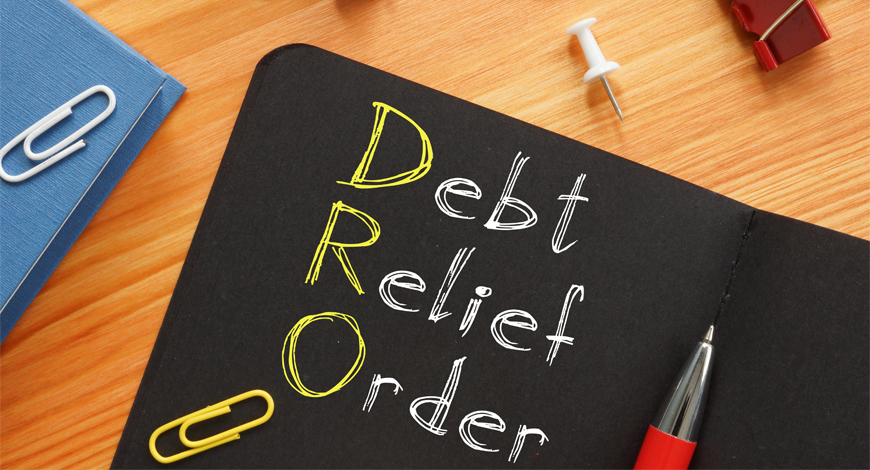
==> Check Out Our Top Choice For Debt Relief <==
If an individual is feeling overwhelmed by debt, a Debt Relief Order (DRO) may be a viable solution to consider. This article provides essential information regarding DROs, including their definition, the application process, and the eligibility criteria.
The article outlines the necessary documentation, associated costs, and the typical timeframe for processing a DRO. Furthermore, it explores the implications following approval, the debts included, and alternatives available if a DRO is not suitable for the individual’s circumstances.
This information aims to provide clarity and assist individuals in taking control of their financial future.
What is a Debt Relief Order?
A Debt Relief Order (DRO) is a legal solution in the United Kingdom intended to assist individuals experiencing substantial financial hardship by offering a formal mechanism for debt resolution without resorting to traditional bankruptcy.
This government-supported order enables eligible individuals to eliminate certain debts and regain control over their personal finances, positioning it as a viable option for those grappling with consumer debt and seeking effective alternatives to bankruptcy.
By utilizing a DRO, individuals can attain financial stability and mitigate the stress associated with overwhelming financial obligations while preserving their dignity throughout the process.
How to Apply for a Debt Relief Order
Applying for a Debt Relief Order (DRO) entails a comprehensive application process that necessitates individuals to evaluate their eligibility criteria and prepare the requisite financial documentation to comply with the standards established by the government.
Initially, individuals must compile information pertaining to their debts, income, and monthly expenses, which will assist in assessing their eligibility for this financial relief program.
Engaging with debt advice services or financial counseling can further elucidate the application requirements and facilitate a more efficient submission process, thereby creating a more straightforward pathway to securing a DRO.
What Are the Eligibility Criteria for a Debt Relief Order?
To qualify for a Debt Relief Order (DRO), individuals must meet specific eligibility criteria, which include demonstrating financial hardship and maintaining a limited level of income and assets. This assessment process necessitates a comprehensive income evaluation to ensure that the applicant’s debts do not exceed a defined threshold and that they are unable to repay their non-priority debts within a reasonable timeframe.
It is essential for individuals considering this option to understand creditor rights and the implications associated with entering into a DRO as a means of achieving financial recovery.
Applicants should be aware that their total debts must not exceed a specified limit, generally set at approximately £30,000, and they must have a disposable income of less than £75 per month. Furthermore, it is crucial to identify which types of debts are eligible under this arrangement, as secured debts such as mortgages are not covered.
Demonstrating financial hardship is imperative, as it strengthens the case for entering a debt repayment plan without incurring ongoing interest. Additionally, those contemplating a DRO should consider the potential impact on their credit rating, as it may restrict future borrowing opportunities for several years.
What Documents Do You Need to Apply for a Debt Relief Order?
When applying for a Debt Relief Order (DRO), individuals are required to prepare a comprehensive set of financial documentation to support their application and accurately represent their financial situation. This involves gathering account statements from creditors, proof of income, and any additional financial audit information that thoroughly reflects their financial obligations and status. Effective communication with creditors also plays a crucial role in this process, as it ensures that all necessary information is disclosed to facilitate a successful application.
This meticulous collection of documents is not merely a procedural formality; it serves as a detailed overview of the individual’s financial health. Each document contributes to a clearer understanding of the applicant’s debt profile, aiding in the assessment of the most suitable debt relief options for their specific circumstances.
For example, proof of income enables evaluators to ascertain the applicant’s capacity to meet payment obligations, while creditor statements provide clarity regarding the total outstanding debts that require attention. Accurate financial documentation is essential in formulating effective financial planning strategies, ensuring that individuals can establish a pathway toward stability and recovery.
How Much Does It Cost to Apply for a Debt Relief Order?
The cost associated with applying for a Debt Relief Order (DRO) is relatively modest in comparison to other debt relief options, featuring a standard application fee that aims to be accessible for individuals facing financial hardship. This fee is generally payable at the time of application, and it is essential for individuals seeking assistance from a debt relief program to understand this cost.
Moreover, it is important to consider potential processing delays and the overall approval timeframe when budgeting for the application process, ensuring that applicants are adequately prepared for any fees related to their financial recovery.
Plus the initial application fee, individuals should be aware of other expenses that may arise as they manage their financial resources effectively. For instance, there may be fees associated with obtaining necessary documentation or seeking advice from financial advisors, which can significantly enhance the overall debt management strategy.
It is prudent for applicants to conduct preliminary research to identify these potential additional costs and incorporate them into their financial planning.
This comprehensive approach to budgeting not only better prepares applicants for the DRO application but also aids them in gaining a clearer understanding of their overall financial situation.
How Long Does a Debt Relief Order Take to Process?
The processing time for a Debt Relief Order (DRO) may vary based on several factors; however, applicants can typically anticipate a timeline ranging from a few days to several weeks for approval.
Understanding the expected approval timeframe is vital for individuals managing their financial obligations and seeking timely debt relief solutions. During this period, it is also important to recognize the possibility of processing delays that may occur due to incomplete applications or the complexity of the applicant’s financial circumstances.
What Is the Average Processing Time for a Debt Relief Order?
On average, the processing time for a Debt Relief Order (DRO) is approximately 10 to 14 days, assuming that all required documentation is submitted accurately during the application phase. This timeline may vary based on the comprehensiveness of the financial assessment and the applicant’s overall eligibility status. Understanding this average processing time is crucial for applicants as it allows them to prepare effectively for the subsequent steps in their financial recovery journey.
Several factors may contribute to delays, including the complexity of the applicant’s financial circumstances and any outstanding documentation from creditors. It is essential for individuals seeking debt relief to utilize effective financial planning tools during this period to get a good idea of their expenses and income.
Furthermore, engaging in proactive debt management strategies can significantly increase the likelihood of a smooth application process, thereby enabling applicants to proceed with confidence and establish a clearer trajectory toward financial stability.
What Factors Can Affect the Processing Time of a Debt Relief Order?
Several factors can significantly influence the processing time of a Debt Relief Order (DRO), including the completeness of the financial documentation and the accuracy of the income assessment submitted by the applicant. Processing delays may arise if additional information is required or if complications occur during negotiations with creditors that necessitate resolution. By understanding these factors, applicants can navigate the process more effectively and establish realistic expectations regarding their debt relief timeline.
To facilitate a more efficient process, applicants should ensure that all necessary documentation is gathered and accurately completed prior to submission. Proper preparation not only accelerates the evaluation process but also minimizes the likelihood of errors that may occur during the assessment.
Comprehending the implications of a Debt Relief Order on one’s financial circumstances, particularly its potential impact on credit ratings, can encourage individuals to approach the matter with greater foresight. Additionally, seeking financial assistance, if required, may provide valuable insights into managing these factors, ultimately leading to a more streamlined application experience.
What Happens During the Processing of a Debt Relief Order?
During the processing of a Debt Relief Order (DRO), the application undergoes a comprehensive review to ensure all eligibility criteria are satisfied and that the applicant can effectively benefit from the protections afforded by the order. This phase involves critical communications with creditors and may require court approval, thereby ensuring that the applicant’s debts are managed appropriately throughout the process. It is essential for applicants to understand the proceedings during this period, as it is pivotal for achieving the desired debt relief benefits.
Following the initial review, the processing advances with a meticulous examination of the applicant’s financial circumstances, encompassing a detailed assessment of income, expenses, and outstanding debts. This thorough approach not only identifies the most effective debt reduction strategies but also highlights potential challenges that may arise during the repayment period.
Maintaining ongoing communication with creditors is crucial, as it promotes transparency and aids in preventing further complications. Applicants are strongly advised to stay in close contact with their debt relief advisors to receive timely updates and guidance, thereby facilitating a smoother path towards financial recovery.
What Happens After a Debt Relief Order is Approved?
Upon the approval of a Debt Relief Order (DRO), individuals may experience a notable transformation in their financial circumstances, as they gain legal protection from creditor enforcement while striving to attain financial stability.
This approval enables them to formally acknowledge their debts and establish clear repayment terms, thus providing a structured framework for managing their financial obligations in the future.
It is imperative for individuals to comprehend the implications of this approval to effectively navigate their new status and the responsibilities that accompany it.
What Debts Are Included in a Debt Relief Order?
A Debt Relief Order (DRO) generally encompasses a variety of non-priority debts, including personal loans, credit card debts, and other unsecured financial obligations with which individuals may find themselves struggling. By formally recognizing these debts within the statutory debt relief framework, individuals can pursue a path toward debt freedom without the overwhelming burden of financial stress. It is essential for applicants to understand which debts are included in a DRO in order to make informed decisions regarding their financial management.
It is important to note that priority debts, such as mortgages, council tax arrears, and utility bills, are excluded from a DRO, as these obligations can result in severe repercussions if left unpaid.
Individuals seeking debt resolution should consider engaging with credit counseling services to gain a comprehensive understanding of their financial situation and to explore viable repayment plans. By distinguishing between priority and non-priority debts, individuals can navigate their options more effectively and adopt a holistic approach to managing their financial health, ultimately leading to a more stable future.
What Happens to Your Credit Rating After a Debt Relief Order?
Following the approval of a Debt Relief Order (DRO), there is a significant impact on the individual’s credit rating, as the order will be recorded on their credit file for a period of six years from the date of approval. This record can adversely affect their credit score, making it imperative for individuals to comprehend both the immediate and long-term implications of their debt relief decision while working towards financial recovery. Being well-informed about the impact on credit ratings enables individuals to plan their financial future more effectively.
In the short term, individuals may experience a noticeable decline in their credit score, which can impede future borrowing opportunities and limit access to favorable interest rates on loans and credit cards.
It is essential for individuals to recognize that this situation is not insurmountable. Engaging in proactive financial planning and seeking credit counseling can offer valuable guidance on the process of rebuilding their credit profile over time.
By making timely payments on any remaining obligations and managing new credit products responsibly, individuals can gradually improve their credit score. Ultimately, understanding how a DRO affects credit allows for knowledge-based decision making, thereby paving the way for a more secure financial future.

What Are the Alternatives to a Debt Relief Order?
Exploring alternatives to a Debt Relief Order (DRO) is essential for individuals evaluating their options for addressing significant financial distress. Several effective bankruptcy alternatives can offer comparable relief, each with distinct implications.
These alternatives may encompass debt management plans, individual voluntary arrangements, and informal debt settlements, each presenting unique benefits and challenges tailored to individual circumstances. A comprehensive understanding of these options enables individuals to make informed decisions regarding their financial recovery and future planning.
Debt Management Plan
A Debt Management Plan (DMP) is a systematic approach to managing personal debt, allowing individuals to consolidate their repayments into a single monthly payment, which is then distributed among their creditors. This option facilitates improved financial planning and enhances negotiations with creditors, often resulting in more manageable repayment terms while circumventing formal insolvency solutions. Understanding the mechanics of a DMP is crucial for individuals seeking a viable alternative to a Debt Relief Order.
The process begins with effective credit counseling, which involves a thorough assessment of an individual’s financial circumstances, encompassing income, expenses, and total debt. This nonprofit service collaborates with clients to develop a customized repayment plan that aligns with their budgetary constraints. Once established, the DMP enables participants to make a single monthly payment, thereby simplifying their financial obligations.
Consequently, creditors may agree to lower interest rates or waive specific fees, providing relief for those struggling with multiple debts. This financial assistance not only helps individuals regain control over their finances but also fosters long-term financial literacy and stability.
Individual Voluntary Arrangement
An Individual Voluntary Arrangement (IVA) is a legally binding agreement between an individual and their creditors, allowing for the repayment of a portion of their debts over a specified period. This arrangement often results in the acceptance of a reduced total debt amount. An IVA serves as a structured solution for managing financial obligations, while providing protections against creditor rights and potential enforcement actions. It is essential for individuals considering alternatives to a Debt Relief Order to understand the implications of establishing an IVA.
The process of setting up an IVA typically requires the assistance of a qualified insolvency practitioner, who guides the individual through each step, ensuring that all legal requirements are fulfilled and that the proposal is equitable for both parties involved.
One of the primary advantages of an IVA is that it allows individuals to retain their assets, which is not the case in bankruptcy proceedings. However, there are several risks to consider, including the potential negative impact on credit ratings and the obligation to make regular payments over an extended period.
When comparing an IVA to a Debt Relief Order, it is important to note that the latter is designed for individuals with lower levels of debt and offers a simpler process. In contrast, an IVA may provide greater flexibility for those with larger debts and more substantial asset holdings.
Utilizing financial counseling and implementing effective debt reduction strategies can significantly enhance the likelihood of successfully navigating an IVA and achieving long-term financial stability.
Bankruptcy
Bankruptcy is a formal legal process designed for individuals who are unable to repay their debts. It often results in the liquidation of assets and the potential discharge of debts, offering a fresh start for those experiencing significant financial distress. This option provides statutory debt relief; however, it carries significant implications, including potential damage to one’s credit rating and the loss of personal assets. It is imperative for anyone contemplating bankruptcy to thoroughly understand the process and its consequences, particularly in comparison to alternatives such as a Debt Relief Order.
Navigating the complexities of financial planning during challenging times is crucial for individuals to determine whether bankruptcy is the appropriate choice for their circumstances. The process necessitates the filing of a petition in court, where debts are evaluated, and assets are identified for liquidation. Bankruptcy can serve as a last resort for effective debt management, especially when less severe options, such as Debt Relief Orders, may not be adequate.
Successfully navigating this process can result in a clean slate, allowing individuals to regain control over their financial futures, albeit with careful consideration of how this decision will impact their long-term financial health.
Frequently Asked Questions
How long does a debt relief order take to process?
A debt relief order typically takes around 6-8 weeks to be processed by the Insolvency Service. However, the exact time frame may vary depending on individual circumstances.
What factors can affect the processing time of a debt relief order?
The processing time of a debt relief order can be affected by various factors such as the complexity of the case, accuracy of the information provided, and the workload of the Insolvency Service.
Is there a way to speed up the processing of a debt relief order?
In certain cases, it is possible to expedite the processing of a debt relief order by providing all necessary documentation and information accurately and promptly, and by seeking assistance from a debt advisor or insolvency practitioner.
Can I continue to make payments towards my debts while a debt relief order is being processed?
Yes, you can continue to make payments towards your debts while a debt relief order is being processed. However, once the order is granted, you will not be required to make any further payments towards the debts included in the order.
What happens after a debt relief order is processed and granted?
After a debt relief order is processed and granted, your debts will be frozen for a period of 12 months. During this time, your creditors will not be able to take any legal action against you for the included debts.
What happens if my debt relief order is not approved?
If your debt relief order is not approved, you will be notified of the reasons and given a chance to appeal the decision. It is important to seek advice from a debt advisor or insolvency practitioner to understand your options in such a situation.




